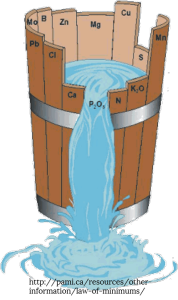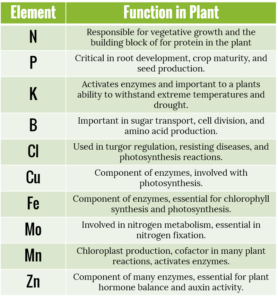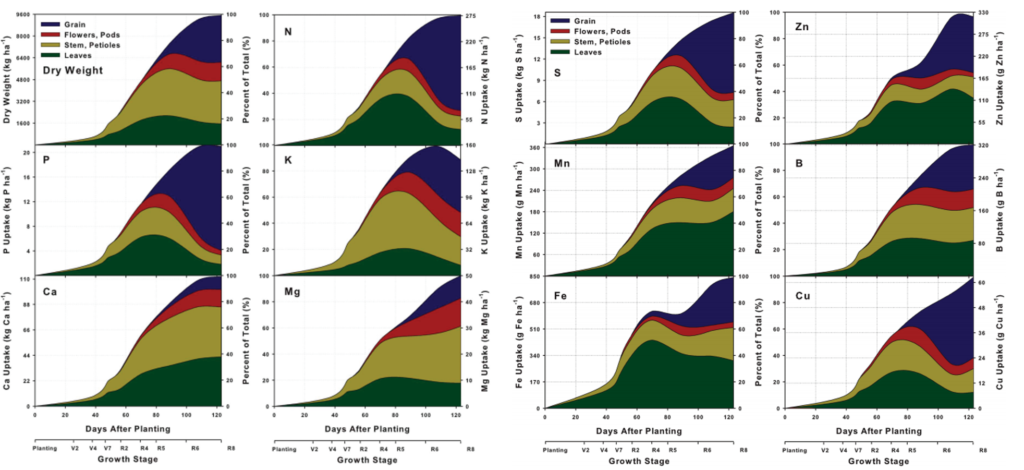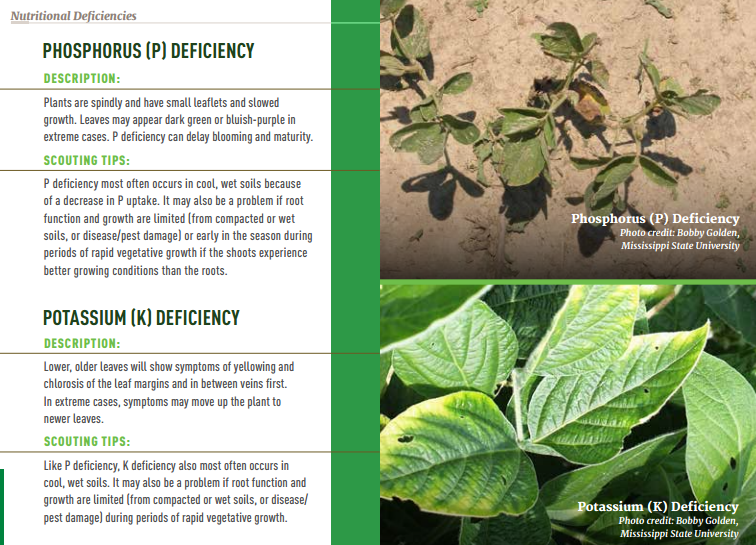Soybeans have long been viewed as a “rotational crop” in North Carolina, and proper fertilization programs for soybeans are often ignored. But, an interest in the production of high-yielding soybeans has stimulated interest in maximizing soybean yield via proper fertilization. There is also interest in in-season nutrient applications to help boost yields.
Soybean Fertility Basics
Soybeans require 16 elements to complete the processes required for growth and seed set. Lack of an adequate supply of any one of these 16 elements will limit yields. Remember Liebig’s Law of the Minimum – that plant growth is limited by the scarcest resource.
Each nutrient has a function in the plant. Below is a chart of some of the important functions of the most common plant nutrients.
Despite soybeans often being thought of as a “hands-off” crop, it is actually very nutrient-intensive compared to many other crops. For perspective, it takes 1.5 to 3.0 times greater aboveground P and K uptake to produce a bushel of soybeans than a bushel of corn. Below is the amount of common nutrients needed to produce 50-bushel soybeans.
In addition to grasping the amount of N, P, K, and micronutrients needed to produce a soybean crop, it’s also important to think about when in the season the crop will need each of the required nutrients. Below is data from the University of Illinois. Uptake of each nutrient is presented over the growing season, as it’s partitioned into leaves, stems, flowers, and grain. Notice for most nutrients, rapid uptake doesn’t really begin until R2- R4. Therefore, it is important to implement agronomic practices that ensure nutrient availability during late-season growth, to meet soybean fertility demand.
So how much (if any) N, P, K, and micronutrients should you be applying? While the jury is still out N applications for soybeans, having adequate levels of P and K, as well as the micronutrients, are essential to maximizing yields in your crop.
Soil testing is the best way to determine if your fertility levels are adequate and if not, what you should be adding. If you didn’t soil test to determine proper fertility levels, be on the lookout for deficiency symptoms this season so you can correct for next year.
While soil testing is the best way to determine if your fertility levels are adequate, soil test recommendations for growing soybeans in North Carolina have not been updated in over 20 years. There have been questions if our current soil test recommendations are adequate so the NCSPA sponsored research with the NCDA to start evaluating current soil test K recommendations. The NCSPA and checkoff funded a project to evaluate current soil test K recommendations and plant tissue testing sufficiency ranges to ensure N.C. growers receive the best information for cost-effective production and competitive yields.
Potassium (K) deficiency is the most prominent nutrient deficiency in plant tissue samples analyzed by NCDA and 40% of soil samples submitted are medium to very low for K (K-1 = 0-50). If recommendations are followed, K fertilizer costs can be a significant part of growers’ annual operating expenses at about 20%. However, if K is under-applied and is limited, seed yields are decreased from 5-20%.
Sites of varying K levels were selected under conventional and no-till production systems to evaluate applications of muriate of potash (MOP) ranging from zero to 200 pounds per acre. The study was conducted over two years and so far, no yield response to K was found at any site in spite of the fact that some sites were sufficiently low enough to warrant potash recommendations. Also, no yield response occurred in plots where tissue samples of plants at early growth or R2 indicated K levels below sufficiency. However, the addition of 50 pounds of K2O did bring tissue sample levels in those plots up to sufficiency. This study supports the idea that soil test recommendations appear to be adequate for a range of yield conditions as related to soil types commonly found in N.C. Further research will be conducted in 2018 to confirm these findings.
Come back next week when we will look at some data from N application tests to begin to address the question about the profitability of N applications in soybeans.
References:
Bender, R.R., J.W. Haegele, F.E. Below. 2015. Nutrient uptake, partitioning, and remobilization in modern soybean varieties. Agron. J. 107:563-573.
Heatherly, L. 2016. Nutrient management for soybean production. Mississippi Soybean Promotion Board. http://www.mssoy.org/uploads/files/soil-fertility-white-paper-oct-2016.pdf.
Slaton, N., T. Roberts, J. Ross. 2013. Fertilization and liming practices. Arkansas Soybean Production Handbook. University of Arkansas. http://www.mssoy.org/uploads/files/soybean-fert-ark.pdf.











